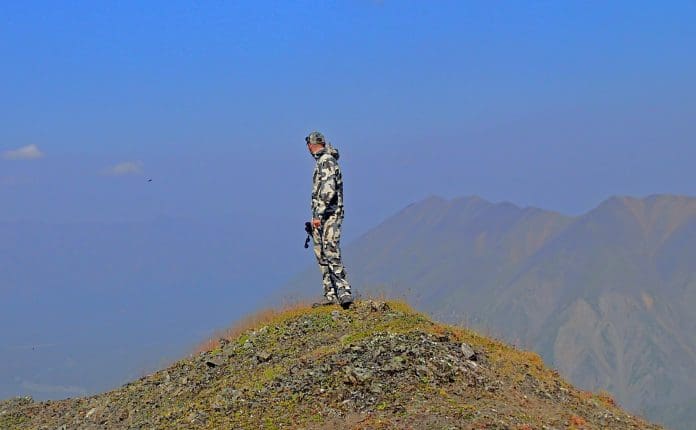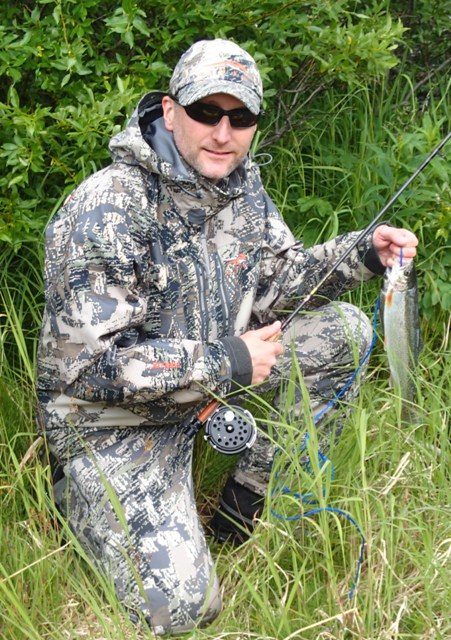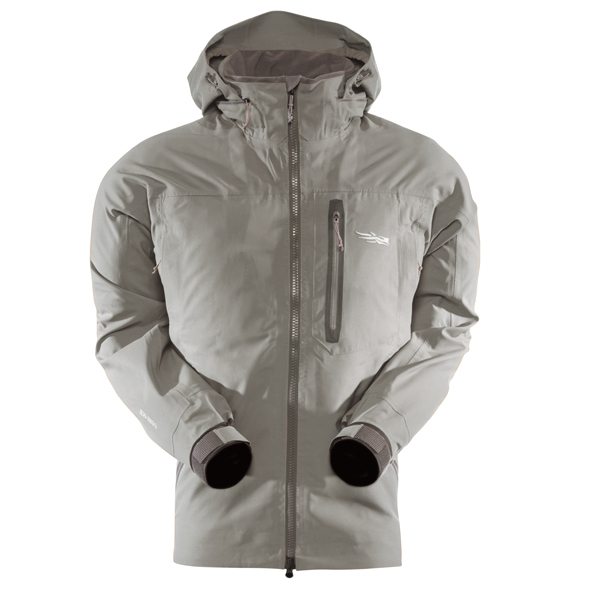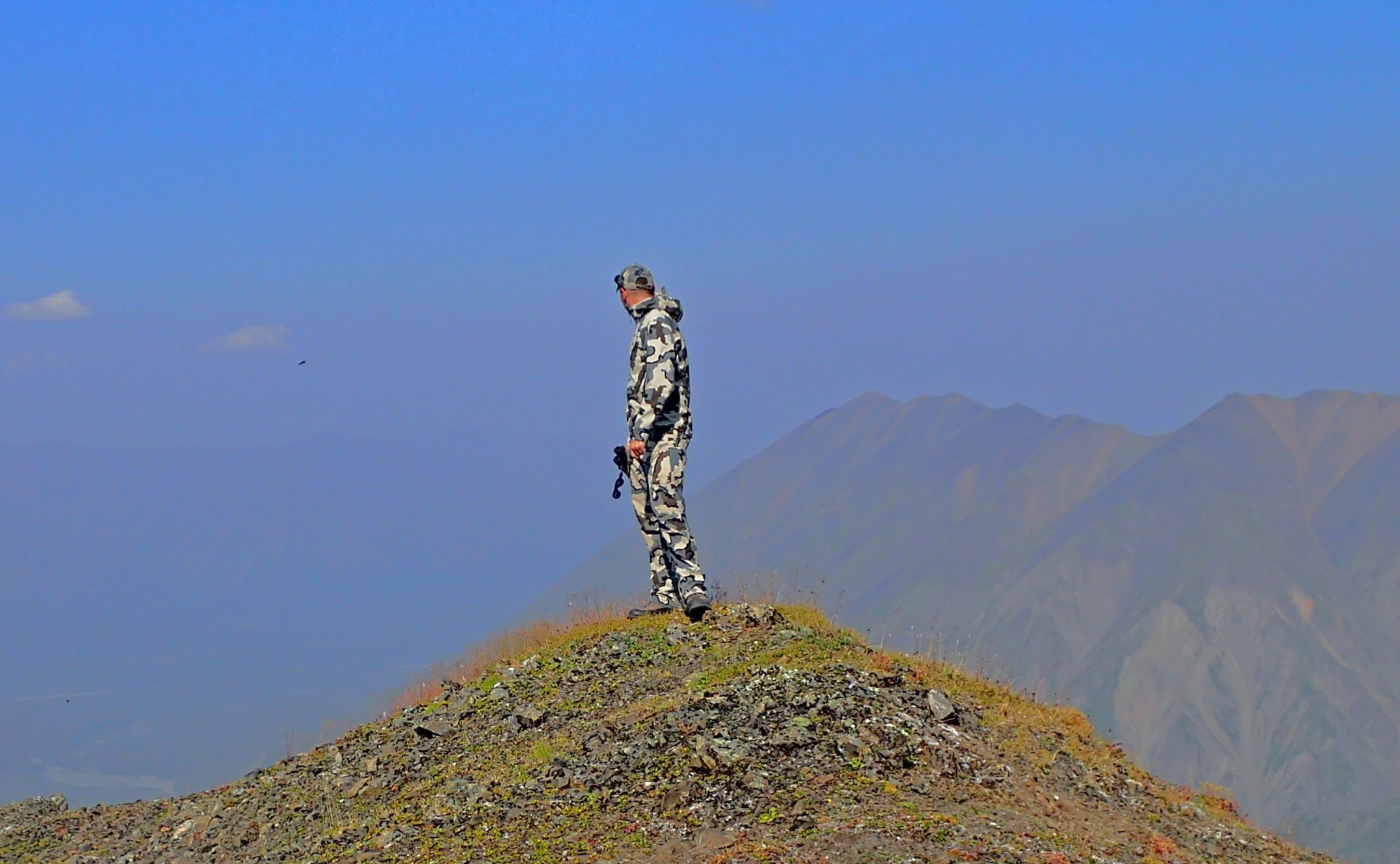
Hard Core Rain Gear
by Matt Wymer, Rokslide Prostaff
An investment in rain gear is a critical choice for those who spend months planning and dreaming of the perfect trip. I have come to the conclusion that one’s investment in rain gear should coincide with the amount of time they spend in it, balanced with performance. An Alaskan guide on Kodiak is going to have much different needs than an elk hunter from Colorado. For both, however, staying dry can be the borderline between life and death, and most certainly comfort in the backcountry. Although I am not a guide on Kodiak, I do live, fish, and hunt, in Alaska. You can be assured that the rain gear tested in this article was used and eyed very critically.
In my earlier Rokslide review (Lightweight Rain Gear Shootout) I looked at various “lighter weight” rain gear. I learned a lot about the technical details behind the design and build and that price differences can sometimes be worth it. This review focuses on heavy to mid weight rain gear. This stuff is tougher (and heavier) than the previous rain gear but many backcountry hunters may find it a better choice for their needs.
First up is the Kryptek Koldo. This is one tough set of rain gear. With is reinforced knees, thick material, and large hood this is a set of gear built to take a beat down and come up whole, “battlefield to backcountry”. This jacket has pockets all over it and features chest-high front pockets to assist with access while wearing a pack. The jacket also includes dual arm pockets, and both a left external and internal chest pocket.
At less than $500 for the set, it clearly sets itself away from the others. However, it’s not perfect. The large hood was difficult for me to see out of. I believe the hood is designed for use over a battle helmet that would fill up the extra space. 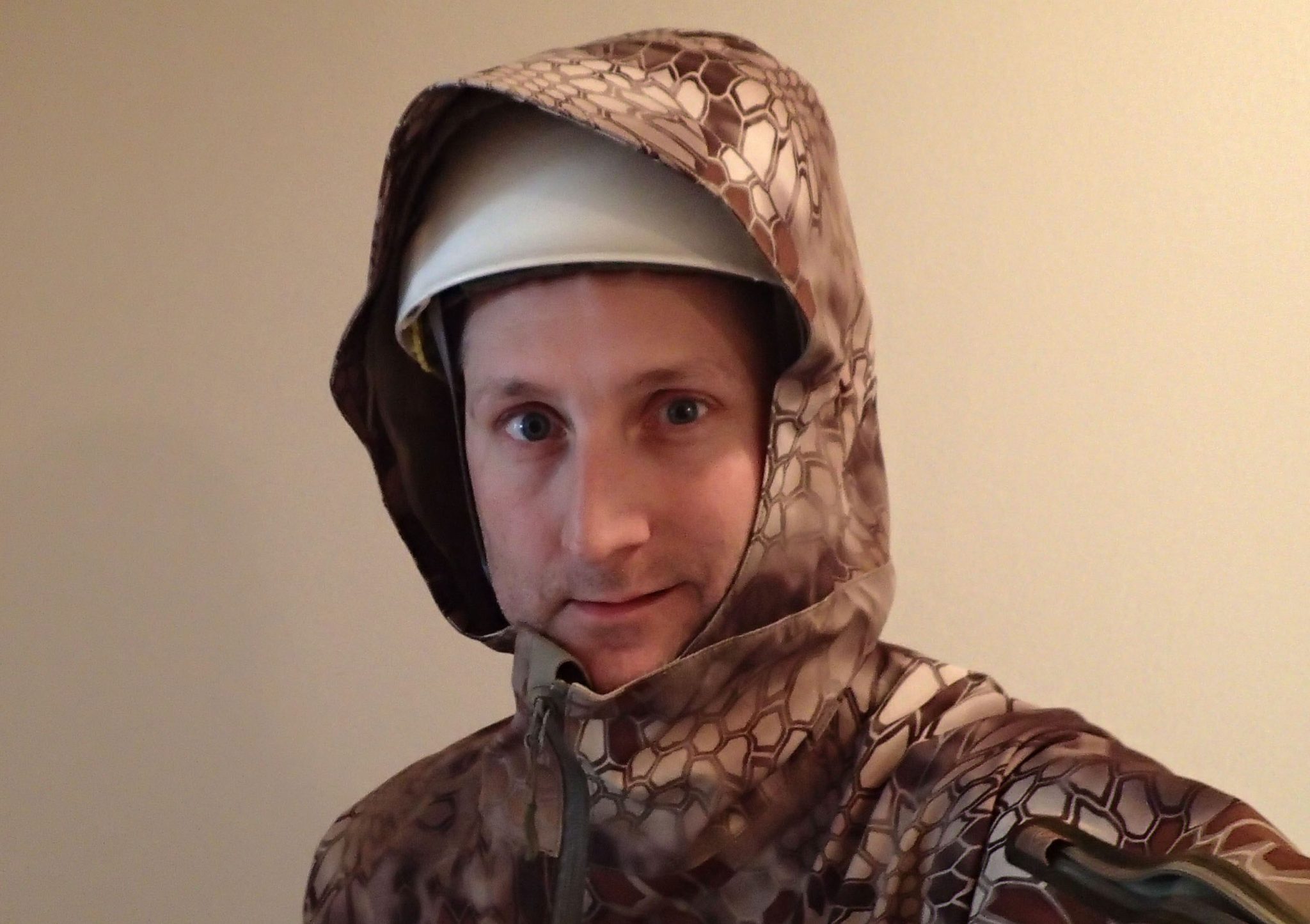
Waterproof it is, but it is not as breathable as the other sets. However, I don’t think that should push you away. It’s not clammy and still breathes somewhat well. This class of rain gear is typically for guys who are spending time in the rain, but not necessarily chasing a ram up Steep Creek Gulch. This is an ideal set of rain gear for rafting, ATV’ing, riding a horse, or sitting a tree stand. It will hold up to just about everything and keep you dry. One thing to note on the Koldo pants is that the dual zippers must be securely tucked up into the upper zipper catch in order to maintain water resistance. 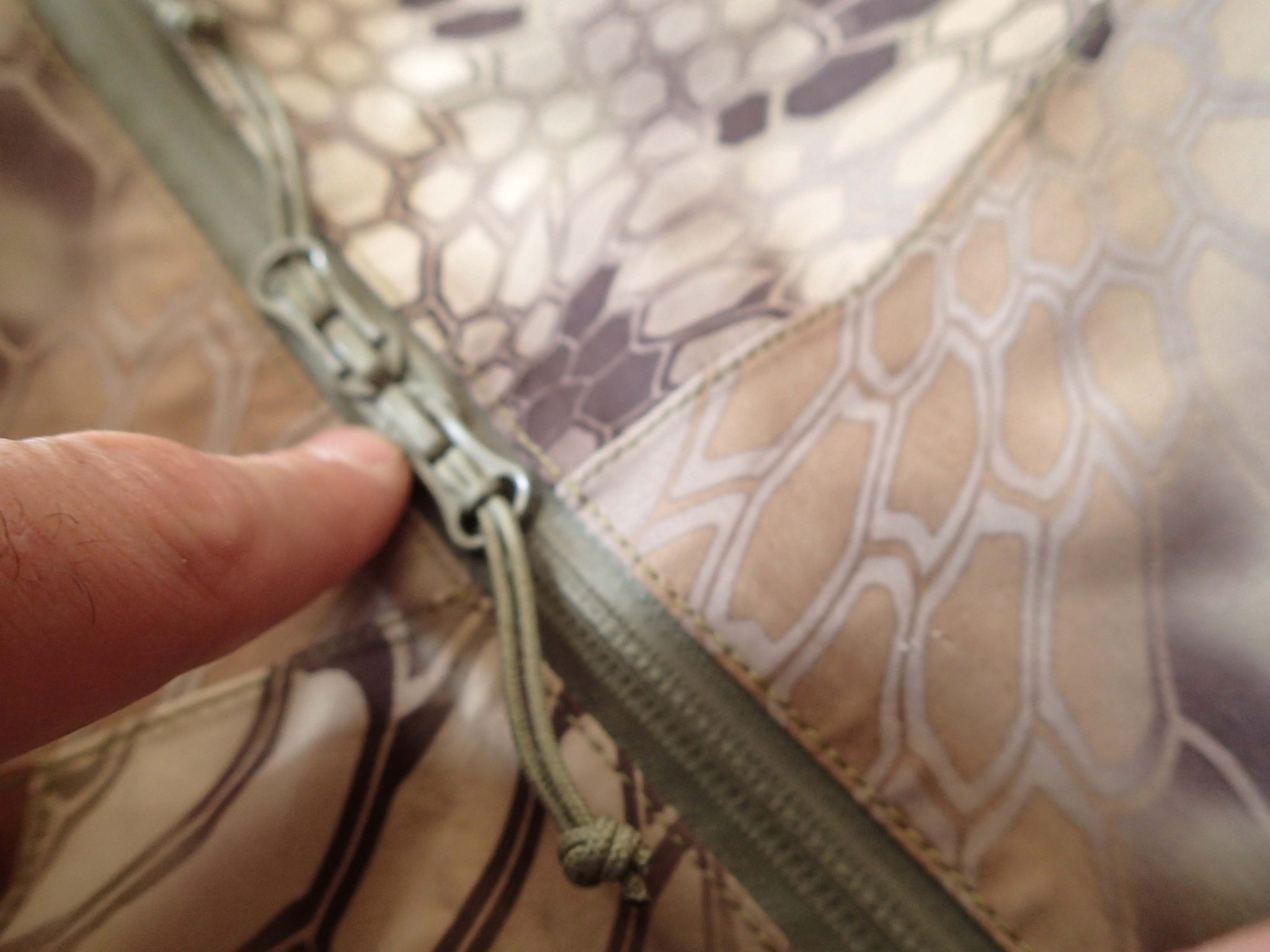
If the If the zippers are left halfway down, the leg the design does not allow a waterproof seam between the two zippers.
The Koldo is an excellent set of rain gear and the budget buy for medium to low exertion activities. It’s built to take a beating.
The KUIU Yukon is very nice set of gear. It is soft to the touch and its breathability is class leading. Attention to detail is evident throughout the line. The rubber gasket on the sleeves allows one to cinch the cuff down and keep water from running down your sleeve, even with arms raised. Zippers glide smoothly and are easy to access and use. Dual pit zips dump moisture when needed. This set is comfortable and the size medium set I have fits me very well.
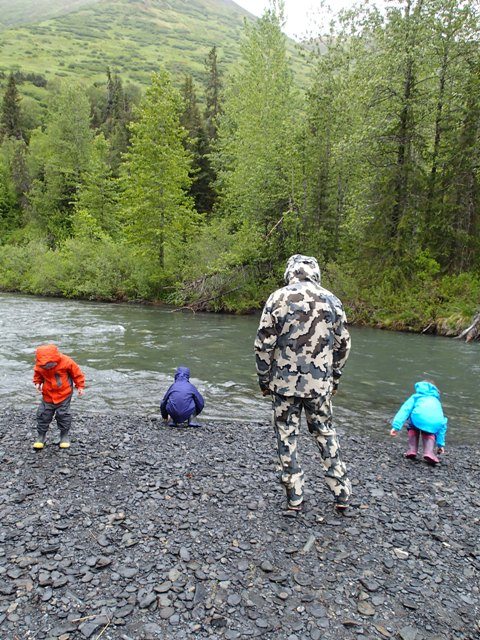
However, shower tests reveal two minor weaknesses. The first was a on the left side of the jacket, just below the pocket. A damp spot would be revealed after the test, but the T-shirt underneath was only slightly damp. The second was near the crotch. I struggled to pinpoint the exact point of entry but somewhere on the lower left side of the fly a slight leak would occur with dampness going through to the layer beneath. Note, this is a shower test and shower tests push rain gear. While my field time in the Yukon gear did not always include rain storms, only the chest area leak could be mimicked, and it was minimal. I’ve read some reviews that pointed to issues with the main zipper, however I had no issues.

The Sitka Stormfront is cleverly designed with a lot of attention to detail. Cuffs, pockets, hood, and zippers align into a well-made piece of outdoor gear art. The more time I spend in the gear the more I realize the effort that went into the design. From the pockets to the zippers, to the cuffs, this stuff just works!
Sitka claims every square inch is designed with the sole intent of keeping you dry. From Sitka:
“The Stormfront Series has a focus on livability and convenience in never-ending storms. It’s intended for guides and for those who can’t afford to spend any time under a shelter.”
This means intrinsic details are well thought through and are often missed until you have spent time in the gear. I utilized my set both in spring and Alaskan winter conditions. The one constant? I never got wet utilizing the Stormfront.
What I really liked about the Stormfront was that as I used it, the gear seemed made for me. I’d reach for something and it would be there; I’d wish it had a feature and then realize it did. I’m not sure how to articulate this, but the fine details of the gear seemed to be designed for the way I was using it. However, this is one expensive set of rain gear! In reality, the set costs more than many of our weapons.
The Sitka Coldfront line was a last minute entry to my rain gear test and I have the least amount of time in it. Additionally I received this set mid-year but it is designed for late season / winter use. The Coldfront series was redesigned for 2014 and is engineered for long term exposure to wet and cold conditions. It features a 3-layer GORE-TEX soft-shell that is 100% waterproof and breathable. Sitka then lined that shell with an insulating lofted micro check fleece. The shell features a quiet face fabric that feels incredibly durable. Combine that with the waterproof features and you have a jacket that delivers some serious protection from wet cold conditions.
Sitka states,
“The addition of a mid weight fleece backer to a GORE-TEX garment makes the Coldfront the perfect system for those who travel by horseback in wet, cooler temps or active hunters in bitter cold.”
I may not have a horse to ride, but this fall and winter should provide excellent opportunities here in Alaska to further test this gear.
What little time I have spent in the Coldfront leads me to conclude that is basically a lightly insulated version of the Stormfront. It’s a little heavier, definitely warmer, and slightly less breathable. It also adds two lower pockets and like the Stormfront staying dry was never a concern.
I had initially written the Coldfront off as too heavy for mountain use, but the more I wear it the more I like it. It’s still a heavy jacket and the insulation factor will push this jacket to later season use, at least for how I hunt.
Gore-Tex has a bad rep these days as not being either waterproof or breathable. However, in all of my tests I was able to stay dry and the jackets breathed pretty darn well. The Yukon set seemed slightly more breathable than the Coldfront, but on par with the Stormfront, with all being more breathable than the Koldo. However, as many have pointed out, it is very hard to compare breathability in field tests, even the controlled ones I attempted.
A pro and con of the Stormfront, Coldfront, and the Yukon is the rubber gasket on the wrists. Cinching this down keeps water from running down your arms in a rain fall, but once wet it can take 24 hours to dry.
To summarize:
The bargain hunter can’t overlook the value the Koldo line brings, however there are tradeoffs (hood fit and breathability). With that said it’s a great jacket for the general outdoorsman. ATVing, fishing, and camping, you’ll be dry and the jacket will survive.
The Yukon is a combo of value and performance and makes this most likely choice for most hunters (especially when they release some options in solid colors).
The Sitka Stormfront is a hard sell at $1,000+ for the complete set. However, I have talked to folks who have lived in this gear on extended SE Alaska hunts and they were not worried one bit about the price they paid. It’s also the lightest set in the test. I view this as the go-to set for the hunter who rarely sees the sun shine, and days afield rival days at home.
The Sitka Coldfront appears to be a lightly insulated version of the Stormfront and designed for a niche market: high performance warmth for low exertion in cold and wet weather. I have come to enjoy this jacket as a general all around jacket for low exertion activities here in Alaska, especially when the temp dips below 60 degrees.
You can discuss this article here














